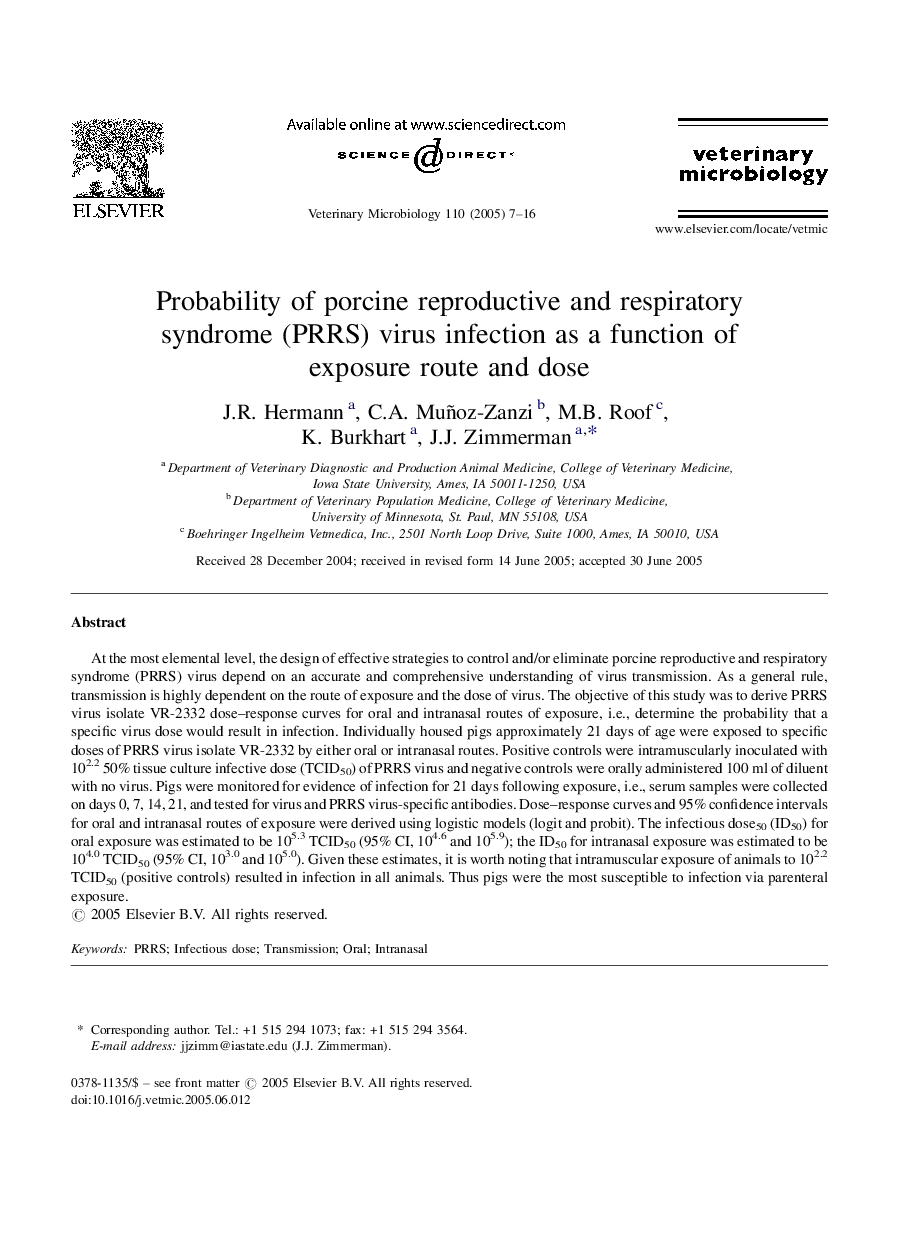| کد مقاله | کد نشریه | سال انتشار | مقاله انگلیسی | نسخه تمام متن |
|---|---|---|---|---|
| 8989453 | 1555471 | 2005 | 10 صفحه PDF | دانلود رایگان |
عنوان انگلیسی مقاله ISI
Probability of porcine reproductive and respiratory syndrome (PRRS) virus infection as a function of exposure route and dose
دانلود مقاله + سفارش ترجمه
دانلود مقاله ISI انگلیسی
رایگان برای ایرانیان
موضوعات مرتبط
علوم زیستی و بیوفناوری
علوم کشاورزی و بیولوژیک
علوم دامی و جانورشناسی
پیش نمایش صفحه اول مقاله

چکیده انگلیسی
At the most elemental level, the design of effective strategies to control and/or eliminate porcine reproductive and respiratory syndrome (PRRS) virus depend on an accurate and comprehensive understanding of virus transmission. As a general rule, transmission is highly dependent on the route of exposure and the dose of virus. The objective of this study was to derive PRRS virus isolate VR-2332 dose-response curves for oral and intranasal routes of exposure, i.e., determine the probability that a specific virus dose would result in infection. Individually housed pigs approximately 21 days of age were exposed to specific doses of PRRS virus isolate VR-2332 by either oral or intranasal routes. Positive controls were intramuscularly inoculated with 102.2 50% tissue culture infective dose (TCID50) of PRRS virus and negative controls were orally administered 100Â ml of diluent with no virus. Pigs were monitored for evidence of infection for 21 days following exposure, i.e., serum samples were collected on days 0, 7, 14, 21, and tested for virus and PRRS virus-specific antibodies. Dose-response curves and 95% confidence intervals for oral and intranasal routes of exposure were derived using logistic models (logit and probit). The infectious dose50 (ID50) for oral exposure was estimated to be 105.3 TCID50 (95% CI, 104.6 and 105.9); the ID50 for intranasal exposure was estimated to be 104.0 TCID50 (95% CI, 103.0 and 105.0). Given these estimates, it is worth noting that intramuscular exposure of animals to 102.2 TCID50 (positive controls) resulted in infection in all animals. Thus pigs were the most susceptible to infection via parenteral exposure.
ناشر
Database: Elsevier - ScienceDirect (ساینس دایرکت)
Journal: Veterinary Microbiology - Volume 110, Issues 1â2, 30 September 2005, Pages 7-16
Journal: Veterinary Microbiology - Volume 110, Issues 1â2, 30 September 2005, Pages 7-16
نویسندگان
J.R. Hermann, C.A. Muñoz-Zanzi, M.B. Roof, K. Burkhart, J.J. Zimmerman,